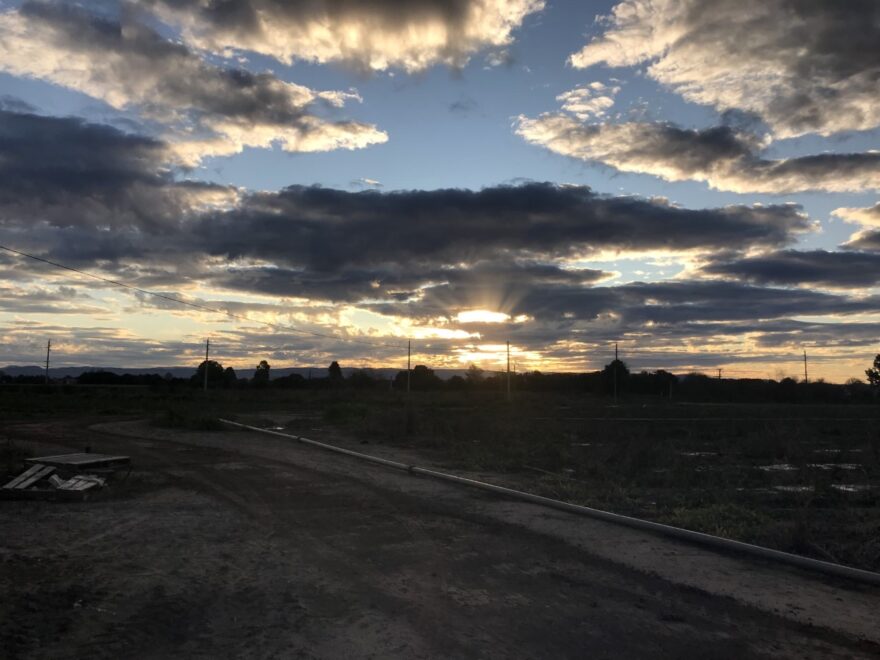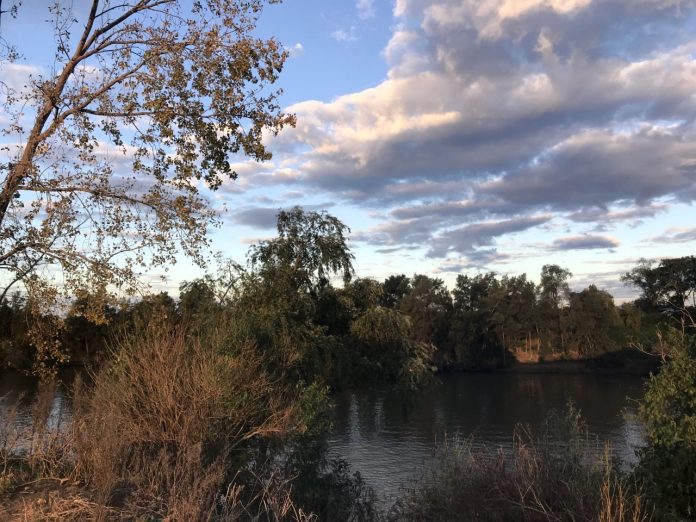The Hawkesbury Regional Museum grapples with showing the true story of colonial frontier massacres in the region’s history.
The Hawkesbury River near Windsor flooded last month. As my car crosses the Windsor Bridge to get to the Hawkesbury Regional Museum, I notice the branches of trees on its riverbanks are still strewn with rubbish from the flood. When I wind my window down, the air smells of mud.
On my drive to Windsor, I pass the place that’s sparked my journey. It is now open fields next to Freeman’s Reach Road, dotted with smashed pumpkins and irrigation pipes. Cars and trucks thunder past.
At this place, on 1 September 1794, British colonisers killed seven or eight Bediagal people of the Darug nation. Colonial Administrator David Collins recorded that after “a body of Bediagal natives” carried off colonisers’ clothes and provisions, they collected “what arms they could find” and “killed the Bediagal on the spot”.
Historian Peter Turbet writes that when the massacre occurred, it represented the largest number of Indigenous people killed by colonisers in a single encounter since 1788. It was the earliest of at least three documented massacres of Aboriginal people in the Hawkesbury region, the first area to be colonised outside Sydney.
The Director of Monash University’s Indigenous Studies Centre, Professor Lynette Russell, tells me this massacre represents the beginning of nearly 150 years of colonial frontier violence across Australia. During that time massacres of Indigenous people were used to further the colony’s expansion. While Russell says the true number of Indigenous people killed is unclear, research estimates that 60,000 Indigenous people were killed in Queensland alone.
There is no memorial anywhere near the Hawkesbury River massacre site today to mark its significance or commemorate the victims. As a non-Indigenous amateur historian living near Windsor, I became aware of its existence from an online interactive map of Australian Colonial Frontier Massacres created by the University of Newcastle.
To find out more, I’d planned to visit the Hawkesbury Regional Museum, ringing ahead. “You’d have to see for yourself, but I don’t think there’s anything much about that in our collection,” a receptionist told me. “There is an Acknowledgement to Country video though.”

The day I visit the Museum, the Acknowledgement to Country video isn’t working. The iPad showing it sits locked, a message on its display saying it is undergoing ‘app optimisation’. I spend the morning wandering through the Museum’s dimly lit four rooms among heavy wooden cabinets of artefacts but find little that addresses the history of colonial massacres in the Hawkesbury region. Nor is there anything on the 17,000 to 27,000 years of Darug occupation of the Hawkesbury area.
Next to a cabinet filled with remnants of convict leg irons, I see a small display case on the region’s Aboriginal history, holding two boomerangs, a flint and a stone axe. An explanatory note informs us that for the Darug, first contact with Europeans “signified the beginning of a process of displacement and conflict which resulted in life-long trauma for many people”.
As a historian, Russell has spent decades of research trying to debunk what she calls “the myth of Australia’s peaceful settlement”. In her view, reluctance to recognise the history of frontier massacres reflects a broader current in Australian debate. She says it still shocks her that, in 2021, more effort is invested in silencing discussion of Australia’s violent invasion than in celebrating 65,000 years of Indigenous history before colonisation.
But Russell says museums remain some of the best resources we have to rebalance the discussion. We should think of them as “places to challenge what people know, or think they know, through showing them real life objects with tangible connections with the past”.
When I meet Rebecca Turnbull, the curator of the Hawkesbury Regional Museum, she surprises me when she echoes this view. As we sit talking in the Museum’s foyer, the only meeting room occupied that day, Turnbull tells me her “personal mantra is that museums are safe places to tell difficult stories”.
“There’s nothing you can’t tell through a Museum,” she says.
Two weeks shy of maternity leave, resting her hands on her stomach as she speaks, Turnbull says she’s sad she’ll miss the Museum’s first ever Darug-led exhibition about the Hawkesbury River, Dyarubbin: The Real Secret History. Dyarubbin is the Darug name for what is known today as the Hawkesbury River. The exhibition, which will include Darug stories about the violence of colonisation, will be held in August while Turnbull is on maternity leave.
As retiree visitors walk past us in the foyer and browse at a pamphlet display, I ask Turnbull about the Museum’s representation of Aboriginal history. She seems to anticipate my line of questioning: whether the Museum could do a better job in its general collection.
Turnbull tells me the biggest barrier to local museums better representing Indigenous culture and history is their lack of staff and resources. The Hawkesbury Regional Museum sits under the auspices of the Hawkesbury Local Council, which created it. Turnbull says that, as a white curator, she’s tried for years to push for an Aboriginal Reference Committee to oversee the representation of Indigenous objects in the Museum’s collection. But no council funding has ever manifested. A few weeks before we meet Turnbull learned that Create NSW, for the first time, allocated funding for an Aboriginal consultant curator to work at the Museum.
Walking to my car, along a street lined with colonial buildings, I recall interviewing Dr Gemmia Burden, a Research Fellow at the University of Queensland. Her work focuses on how museums display Aboriginal cultural items. Burden told me that while museum best-practice is to ensure that Indigenous people manage their collections of Indigenous objects and their uses, regional museums often struggle to secure funding to meet that standard.
Museums are instruments of the public memory of the State, Burden said. Because of this, some Indigenous people experience them as implicitly violent places, either because their collections were directly acquired as a result of colonial violence or because they fail to tell the history of that violence through working with the people impacted by it. Burden quoted Nathan Sentance, a Wiradjuri librarian and essayist at the Australian Museum and author of the Archival Decolonist blog: “Museums are not neutral places.” The words ring in my ears.
As I turn away from the Museum and cross the Hawkesbury River heading home, I ponder Russell’s words on why public discussion on the history of colonial frontier violence is important.
“Every single thing we do in this country is on Aboriginal or Torres Strait Islander land,” she said. “If we could somehow imagine that every tree we look at is on someone’s country, that every cloud is in someone’s sky, and that these are things we could share in, as a starting point, it would make people feel a greater sense of belonging and care for what is a remarkable country.”
Museums are a good place to begin changing how we understand our history and sense of belonging.


